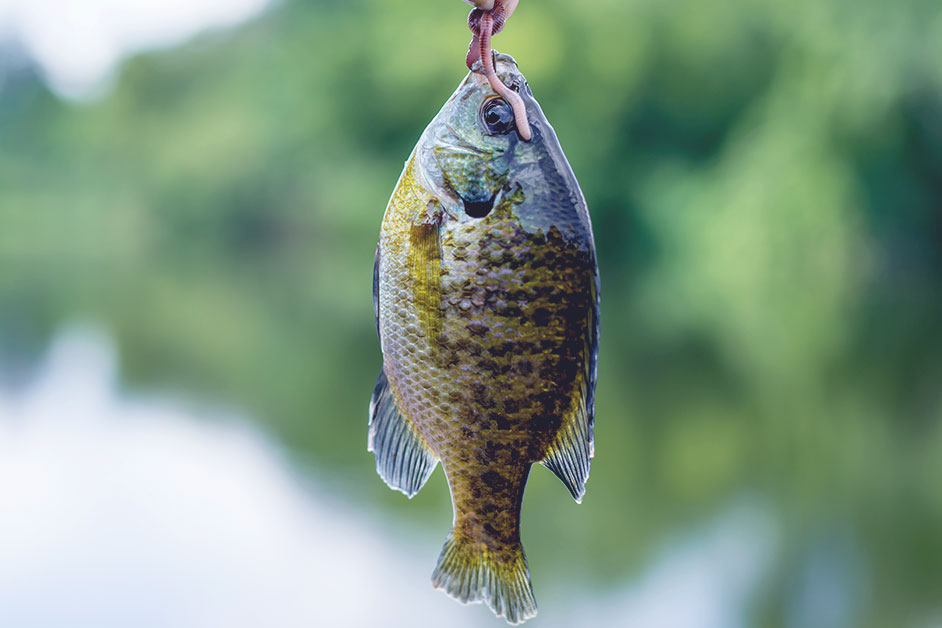
As an avid angler, I have often heard people using the terms “bluegill” and “sunfish” interchangeably. However, these two species are distinct and differ in many ways. In this article, I will discuss the differences between bluegill vs sunfish, including their physical and behavioral characteristics, habitat, distribution, and fishing tips. I will also explore how to cook and eat these tasty fish.
Introduction to Bluegill and Sunfish
Bluegill and sunfish belong to the family Centrarchidae, which includes other popular sport fish such as bass and crappie. Bluegill (Lepomis macrochirus) is a freshwater fish native to North America, commonly found in lakes, ponds, and slow-moving rivers. Sunfish, on the other hand, is a broad term that refers to several species of freshwater fish, including pumpkinseed, redear, green, and longear sunfish.
Bluegill vs Sunfish: Physical Differences
One of the main differences between bluegill vs sunfish is their appearance. Bluegill has a flat and round body with a blue-green color on the head and back, and a yellowish-green color on the sides. It also has a black opercular flap and a dark spot on the dorsal fin. Sunfish, on the other hand, have a more elongated body shape with a variety of colors depending on the species. Pumpkinseed sunfish, for example, have orange, blue, and green markings on their body, while green sunfish are olive green with a yellowish belly.
Another physical difference between bluegill and sunfish is their size. Bluegill typically grows up to 9 inches in length and weighs around 0.5 to 1 pound. Sunfish, on the other hand, can range in size from 4 to 12 inches, depending on the species. Pumpkinseed sunfish, for example, are smaller and usually measure around 4 to 6 inches, while green sunfish can grow up to 12 inches in length.
Bluegill vs Sunfish: Behavioral Differences
Apart from their physical appearance, bluegill and sunfish also differ in their behavior. Bluegill is a social fish that often forms schools and feeds near the surface of the water. It is also known to be a “lazy” fish that prefers to stay in one spot and wait for food to come to it. Sunfish, on the other hand, are more aggressive and territorial. They tend to stay near the bottom of the water and are known for their ability to ambush prey.
Another behavioral difference between bluegill and sunfish is their diet. Bluegill is an omnivore and feeds on a variety of insects, crustaceans, and small fish. Sunfish, on the other hand, are opportunistic feeders and will eat anything they can fit in their mouth, including insects, small fish, and even their own young.
Habitat and Distribution of Bluegill and Sunfish
Bluegill and sunfish have a similar habitat preference and can be found in similar bodies of water. They both thrive in freshwater lakes, ponds, and slow-moving rivers with plenty of vegetation and cover. Bluegill is native to North America and can be found throughout the continent, from Canada to Mexico. Sunfish, on the other hand, are more diverse in their distribution and can be found in many parts of the world, including North and South America, Europe, and Asia.
Fishing for Bluegill vs Sunfish
Fishing for bluegill vs sunfish is a popular pastime for many anglers, especially during the summer months. One of the best ways to catch bluegill is by using live bait, such as worms or crickets. Bluegill are also attracted to small lures, such as jigs or spinners, that resemble their natural prey. When fishing for sunfish, it’s important to use a small hook and light line, as they have a small mouth and can be easily spooked. Sunfish are also attracted to live bait, such as nightcrawlers or small minnows, and small lures, such as poppers or flies.
Cooking and Eating Bluegill and Sunfish
Bluegill and sunfish are both delicious fish that can be cooked in a variety of ways. One of the most popular methods is to pan-fry them with a simple coating of flour, salt, and pepper. They can also be grilled, baked, or broiled with a variety of seasonings and sauces. When cooked properly, the flesh of bluegill and sunfish is white, flaky, and has a mild, sweet flavor.
Conclusion
In conclusion, bluegill vs sunfish are two distinct species of freshwater fish that differ in their physical and behavioral characteristics, habitat, and distribution. Understanding these differences can help anglers catch more fish and appreciate their unique qualities. Whether you’re fishing for sport or for food, bluegill and sunfish are a great catch that are sure to provide a fun and rewarding experience.




